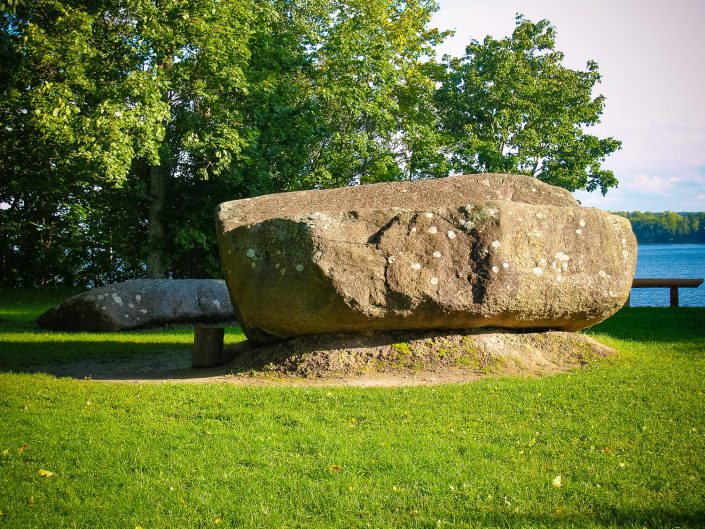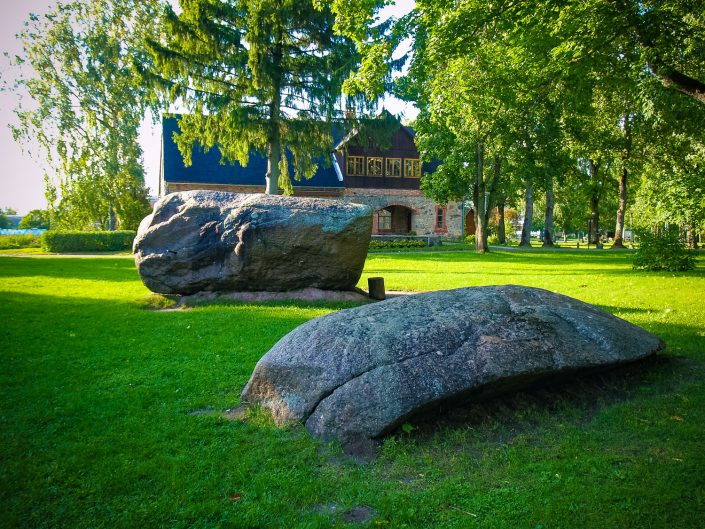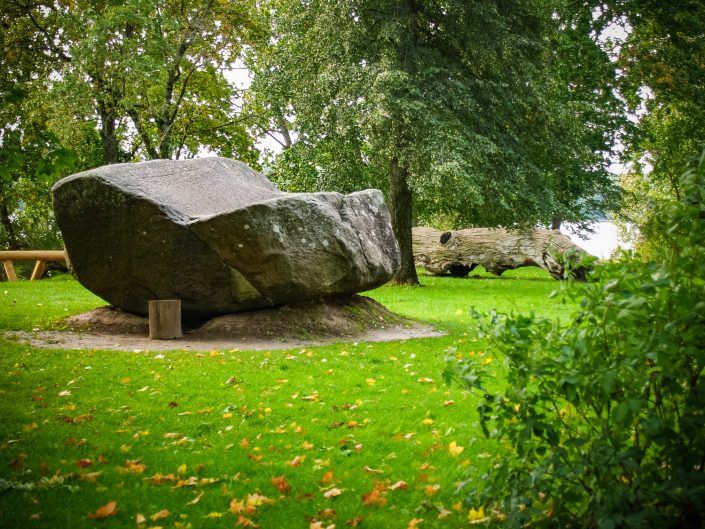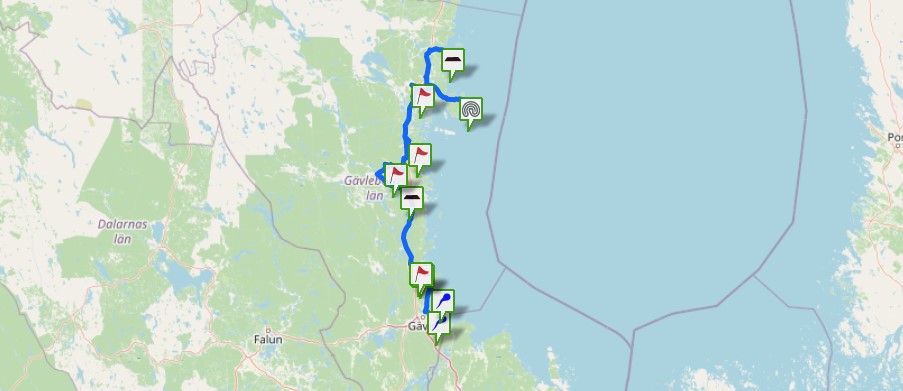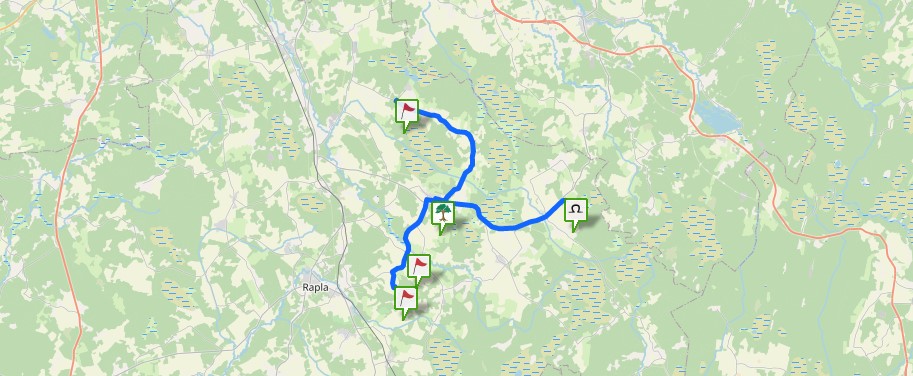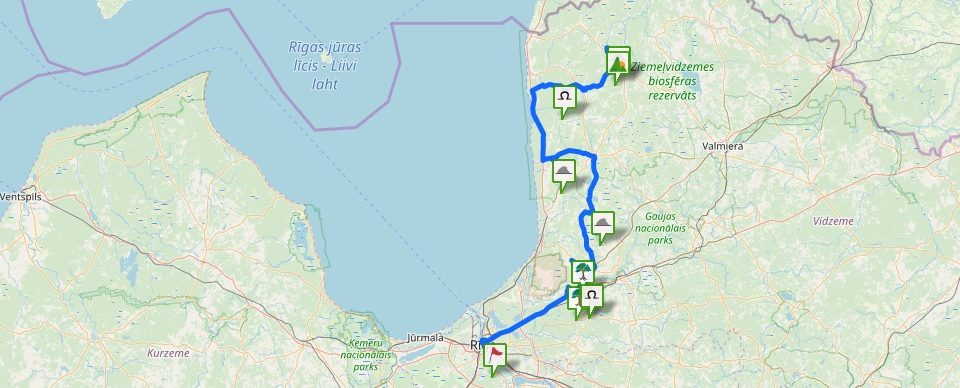Before rising the water level in the Daugava River for building Ķegums Hydropower Station the Lāčplēsis Stone lied in a shallow water at an island opposite Lielvārde. A part of the stone had split off already in ancient times and lied next to the stone. The biggest stone was called Lāčplēsis’ Bed (also Thunder Arrow), the smaller one – Laimdota’s stone or Lāčplēsis’ Blanket. Lāčplēsis Stone was about to be flooded in the water reservoir of the newly-built hydropower station, however, it was not allowed to happen. On both sides of the stone barges came along each with a lifting capacity of 40 t, beams were thrown across the barges, then holes were drilled in the stone and iron pins were driven into the holes and the stone was tied to the beams with wire ropes. Along with the rise in the water level the big stone was torn off the Daugava bed. Then the stone was under the water (thus losing a part of its weight) taken to Ķegums and pulled out. Later the stone was moved to the place where it could not be reached by the risen water level of the Daugava River. On 11 August, 1976 with the help of specialized trucks the stone was taken to and placed in Andrejs Pumpurs’ Lielvārde Museum where the stone lies now. The stone consists of two parts: the volume of the biggest is 20 m3, circumference 15 m, height 2.1 m, length and width 4.8 x 3.5 m. The biggest part of the stone weighted around 75 tonnes, the smallest – around 15 tonnes. It seems that the wreath of Devil’s legends around the Lielvārde Lāčplēsis Stone is rather old because the legends about the slightly further located Koknese Pastamuiža Devil’s Stone which also dwell upon the Devil’s activities on the Daugava banks and mythological transportation of the stone, according to written records, date back to at least the middle of the 15th century. All these sites fit into a wider set of the Daugava Devil’s places and Devil’s legends and are to be considered mythological places. Next to the Lāčplēsis Stone there is an oak trunk associated with the latest folklore – Spīdola’s log (after Urtāns, 2007).
The Devil used to sit on a stone and teased the passing rafters – bargees: he broke struges and pushed rafts on stones. Thus the Devil had also annoyed the Thunder himself who had wanted to punish the Devil, however, as soon as the Devil noticed the Thunder approaching he hid in a stone. Then the Thunder arranged with a fisherman that he would hide in a boat and the fisherman would take the boat to the big stone, then the Thunder would get a hold of the Devil. The fisherman was afraid but the Thunder told him not to frighten. The Devil was sitting on Ārnis Stone (actually Lāčplēsis Stone – J.U.) and combing himself with a golden rake when the fisherman with the Thunder departed towards the stone. The Devil had become scary, stopped combing and probably wanted to hide. Then the Thunder threw his fire at the Devil. Sparks flew, there was sulphur smell in the air and a piece was split of the big stone. However, the Devil either did not turn up there since that time (Eniņš, 1984).
The surroundings of the stone are well organized and well attended. It is planned that a ticket will have to be bought to visit the stone and other sites at the ticket office, however, at the moment of inspection the ticket office was closed. The site belongs to the Lutheran parish in Lielvārde.
